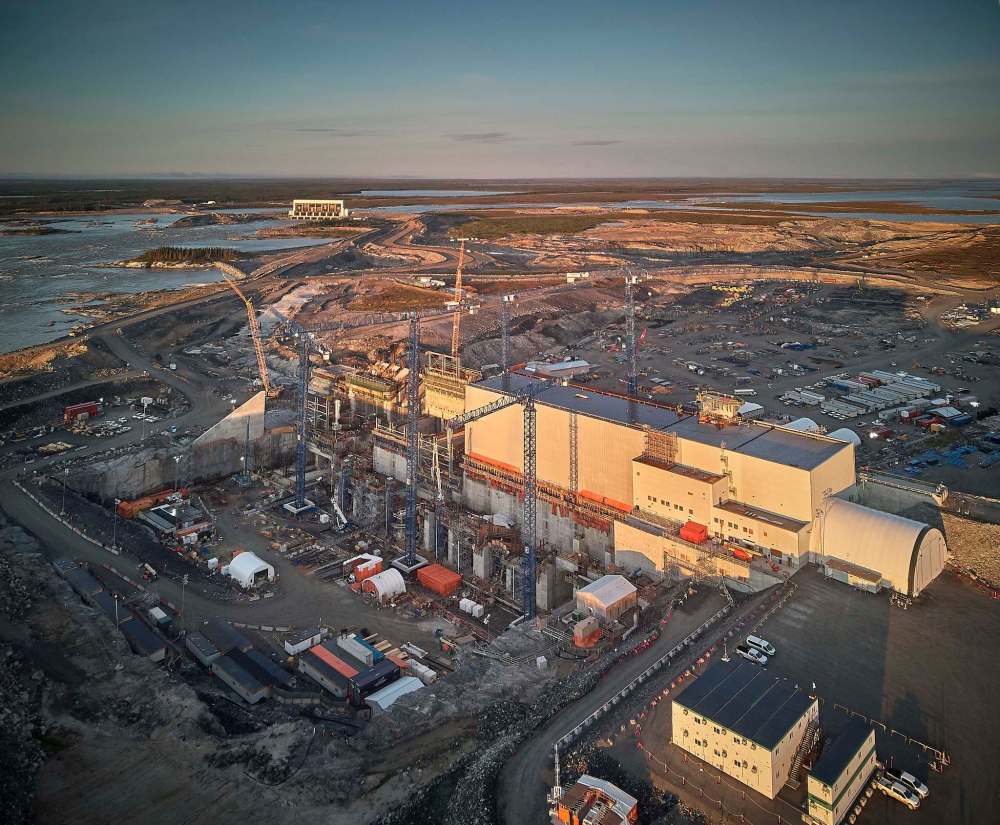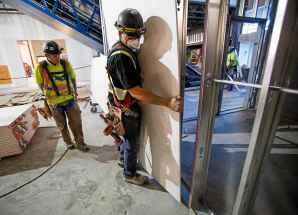1,900 fewer construction jobs needed over next decade Major long-term projects wrapping up in next few years, cutting loose 2,300 workers
Read this article for free:
or
Already have an account? Log in here »
To continue reading, please subscribe:
Monthly Digital Subscription
$0 for the first 4 weeks*
- Enjoy unlimited reading on winnipegfreepress.com
- Read the E-Edition, our digital replica newspaper
- Access News Break, our award-winning app
- Play interactive puzzles
*No charge for 4 weeks then price increases to the regular rate of $19.00 plus GST every four weeks. Offer available to new and qualified returning subscribers only. Cancel any time.
Monthly Digital Subscription
$4.75/week*
- Enjoy unlimited reading on winnipegfreepress.com
- Read the E-Edition, our digital replica newspaper
- Access News Break, our award-winning app
- Play interactive puzzles
*Billed as $19 plus GST every four weeks. Cancel any time.
To continue reading, please subscribe:
Add Free Press access to your Brandon Sun subscription for only an additional
$1 for the first 4 weeks*
*Your next subscription payment will increase by $1.00 and you will be charged $16.99 plus GST for four weeks. After four weeks, your payment will increase to $23.99 plus GST every four weeks.
Read unlimited articles for free today:
or
Already have an account? Log in here »
Hey there, time traveller!
This article was published 04/02/2019 (2503 days ago), so information in it may no longer be current.
After almost doubling over the past 15 years, employment in the construction industry in Manitoba is expected to decline by close to five percent over the upcoming decade.
Those are the findings from an annual study of the construction industry workforce by BuildForce Canada, a national organization that works with the construction industry to assist with its management of workforce requirements.
The report estimates that by 2028 the industry in Manitoba will require about 39,500 workers, down 1,900 from the 2018 total, with the strongest declines, about 13 per cent, over the next three years.

That’s because between 2020 and 2021 a couple of major long-term projects are in the process of wrapping up, most notably Manitoba Hydro’s Keeyask dam construction in Northern Manitoba.
That, as well as work on the southwest rapid-transit corridor and Waverley underpass which will also be completed in that time frame, will mean about 2,300 workers will be looking for their next workplace.
Ron Hambley, president of the Winnipeg Construction Association, said, "The big one is Keeyask. When you cut 2,000 people loose, the industry notices."
The upcoming decline in expected construction labour force demand also has to do with residential construction cycles. The implementation of an impact fee on new residential construction at the end of 2017 generated a surge in housing construction — up about 40 per cent that year from the previous year — pulling housing starts ahead of what might otherwise have been the normal pace.
After that construction frenzy, housing starts were down last year and are expected to recede further in 2019 and 2020 following generally more moderate demands. But housing demand as well as other industrial, commercial and institutional construction is expected to pick up in the ensuing years. Much of the decline in labour force demand is expected to take place over the next three years.
The lessening of demand in the labour market is not necessarily a bad thing, according to Hambley.
"We are returning to a more sustainable level of construction as opposed to the exponential level of growth we were seeing," Hambley said. "That’s easier for the industry, better from a pricing perspective and certainly easier on the labour supply issue."
The report also notes that although it’s estimated there will be 1,900 fewer jobs by 2028, 6,100 additional workers will be needed to replace the 8,000 who are expected to retire over that time frame.
Sudhir Sandhu, CEO of Manitoba Building Trades, said the scenario that BuildForce paints — including much more emphasis in the coming years on housing renovation work as opposed to large scale commercial, industrial or institutional — could make it harder to train those new entrants.
He said the shift in the kind of worksites — from large scale projects to more in-fill and housing renovations — is a cause for concern.
"It is problematic," Sandhu said. "A skilled workforce does not fall out of the sky fully trained. Unlike other professions our learning does not happen only in the classroom. The vast majority of it happens on the work sites."
He said with increasingly more complex skills required as more technology gets adopted, the need for apprenticeship training is even greater. And when only 15 per cent of Canadian employers train 85 per cent of apprentices and the large majority of them are large unionized contractors it could limit the apprenticeship opportunities.
"When we move from industrial and larger scale commercial projects to more residential and renovation work, the scope of those (training) opportunities start to dry up," he said. "Over the next 10 years the particular challenge for us as suppliers of skilled labour will be how to leverage whatever work is going on in the more complex work sites to continue to train apprentices and to continue to develop Manitoba’s skilled work force."
Even though some large projects are winding down there is still a good number of sizable projects underway, including both the Roquette and Simplot industrial plants in Portage la Prairie, Artis REIT’s 40-storey apartment building at 300 Main Street, the Sutton Place Hotel which has begun construction, as well as at least five schools in Northern Manitoba and a hand full of personal care homes.
As well, Hambley said there a number of multi-family residential projects in the pre-construction phase pipeline.
martin.cash@freepress.mb.ca

Martin Cash has been writing a column and business news at the Free Press since 1989. Over those years he’s written through a number of business cycles and the rise and fall (and rise) in fortunes of many local businesses.
Our newsroom depends on a growing audience of readers to power our journalism. If you are not a paid reader, please consider becoming a subscriber.
Our newsroom depends on its audience of readers to power our journalism. Thank you for your support.









